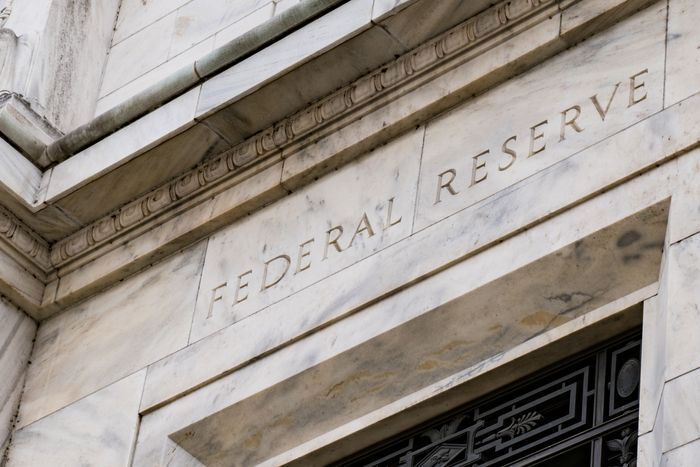
Monetary Policy & Inflation | US

Monetary Policy & Inflation | US
This article is only available to Macro Hive subscribers. Sign-up to receive world-class macro analysis with a daily curated newsletter, podcast, original content from award-winning researchers, cross market strategy, equity insights, trade ideas, crypto flow frameworks, academic paper summaries, explanation and analysis of market-moving events, community investor chat room, and more.
As markets expected, the Fed cut 25bp. Also, the FFR trajectory was lowered by 25bp during 2025-27 (market consensus expected an unchanged 2025 dot). Both the mean and the median 2025 dots fell, i.e., the FOMC overall turned more dovish (Chart 1).
The main rationale was, as expressed in the meeting statement, ‘a shift in the balance of risks’ as ‘downside risks to employment had risen.’ During the presser Powell explained that the more pessimistic employment assessment reflected data released since July’s FOMC, including the QCEW revisions.
Overall, the FOMC seems to have a more benign inflation view. Neither the meeting statement nor the presser introduction mentioned a change in assessing inflation risks. The FOMC base case remains for US tariffs to have a one-off effect on prices rather than a lasting inflation impact, though ‘risks must be managed. Also, the core PCE SEP forecast for 2025 was unchanged at 3.1%.
However, during the presser Powell added that, in his view, inflation risks had decreased partly due to the weaker economy. He added the ‘passthrough from tariffs to inflation has been smaller and slower than we thought.’ This small discrepancy between the meeting statement and presser introduction versus the Q&A could reflect a lack of FOMC consensus on inflation risks.
These changes align with my assessment of labour market and inflation trends.
| Chart 1: FOMC Turns More Dovish | Chart 2: Dissensions Increased! |
|
|
|
The SEP showed one more 2025 cut relative to June’s two, even though 2025’s core PCE and unemployment forecasts were unchanged. During the presser, Powell explained this was because the cut was for risk management. The modal FOMC expectations had not changed but the downside risks to employment Powell had warned about at July’s FOMC had materialised.
A risk management cut was how I had justified yesterday’s move in my preview but I was expecting, with low conviction, a 50bp cut based on my estimate of the inflation/employment risk balance.
During the presser, Powell said ‘there wasn’t widespread support at all for a 50-basis point cut largely because FOMC members did not ‘feel that policy was out of place and needed to move quickly to a new place.’
I think another reason was disagreement on inflation risks among FOMC members, as mentioned above. Also, one FOMC member showed no 2025 cut, more likely to express unhappiness with yesterday’s cut than a belief in a Fed hike this year! Contrary to my expectations, the 2025 dot range widened to six cuts from previously three (Chart 2)!
Powell stated the Fed would decide on further cuts ‘meeting by meeting’ and did not commit to a cutting cycle, even though the SEP forecasts four additional cuts over 2025-27. I think Powell’s unwillingness to commit to a set policy path reflects the lack of FOMC consensus and that the data remains ambiguous.
This week’s retail sales were strong and the Atlanta Fed GDP nowcast currently pegs Q3 growth at 3.3% QoQ SAAR (Chart 3). Yet the Conference Board Leading indicators have hit their recession trigger, consumption is flat relative to December, consumers are deleveraging and the Trump administration is implementing a de facto fiscal consolidation (Chart 4).
The direction of the economy will become clearer as more data becomes available. I would expect additional cuts if unemployment rises above the SEP’s 2025 forecast of 4.5%. This is because a fast increase in unemployment is one of the more reliable indicators of recession. Also, this is the SEP’s key message showing unchanged 2025 unemployment and inflation but a lower FFR.
One of the FOMC dots, most likely Miran’s, showed five additional cuts in 2025. To get that many cuts, the US economy would have to slide fast into recession, which is not impossible but unlikely. The lowest dot was unchanged in 2026 and in 2027 and only 25bp lower than in June’s SEP.
I expect three 2025 cuts, aligning with market pricing.
The commentary contained in the above article does not constitute an offer or a solicitation, or a recommendation to implement or liquidate an investment or to carry out any other transaction. It should not be used as a basis for any investment decision or other decision. Any investment decision should be based on appropriate professional advice specific to your needs. You are not permitted to publish, transmit, or otherwise reproduce this information, in whole or in part, in any format to any third party without the express written consent of Macro Hive. This includes providing or reproducing this information, in whole or in part, as a prompt.)
Spring sale - Prime Membership only £3 for 3 months! Get trade ideas and macro insights now
Your subscription has been successfully canceled.
Discount Applied - Your subscription has now updated with Coupon and from next payment Discount will be applied.